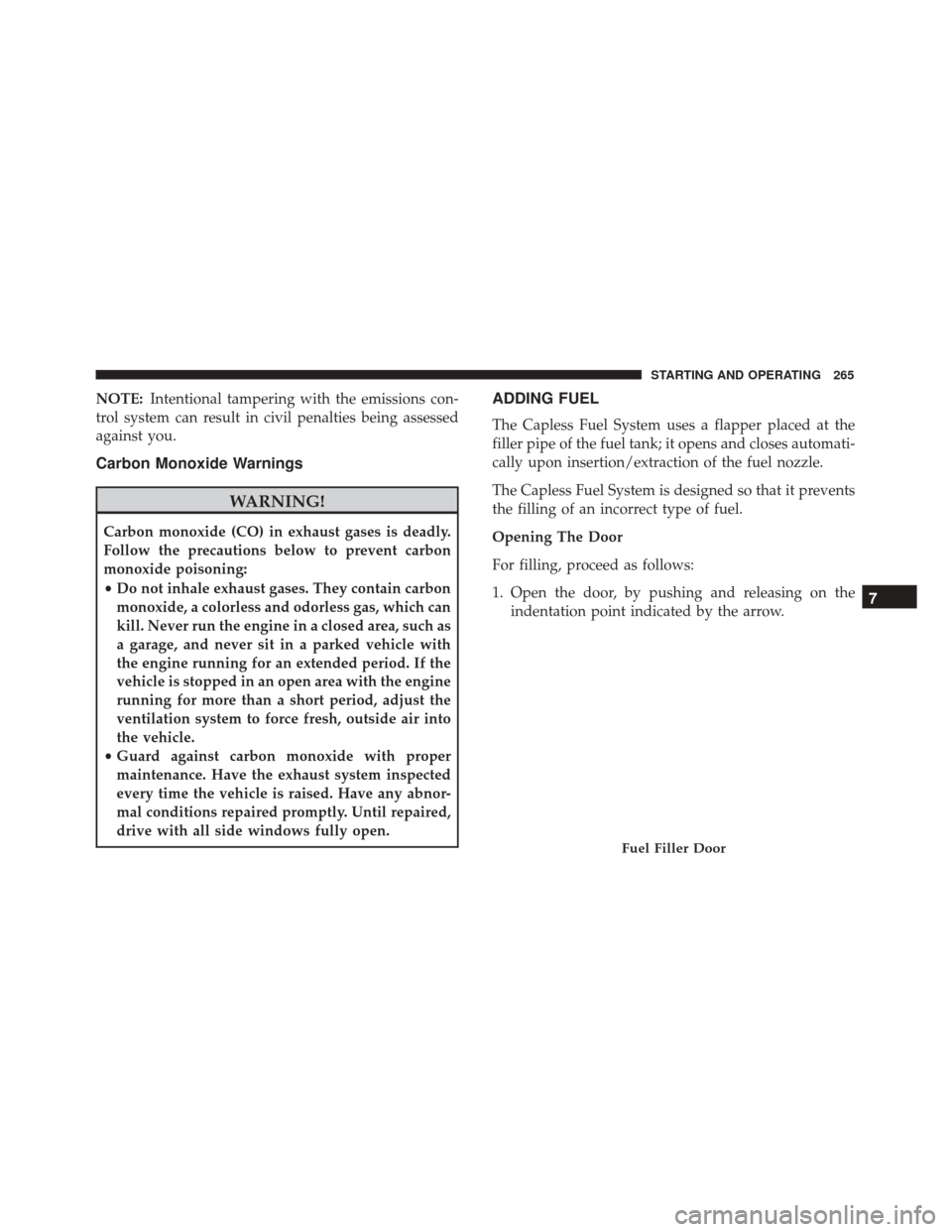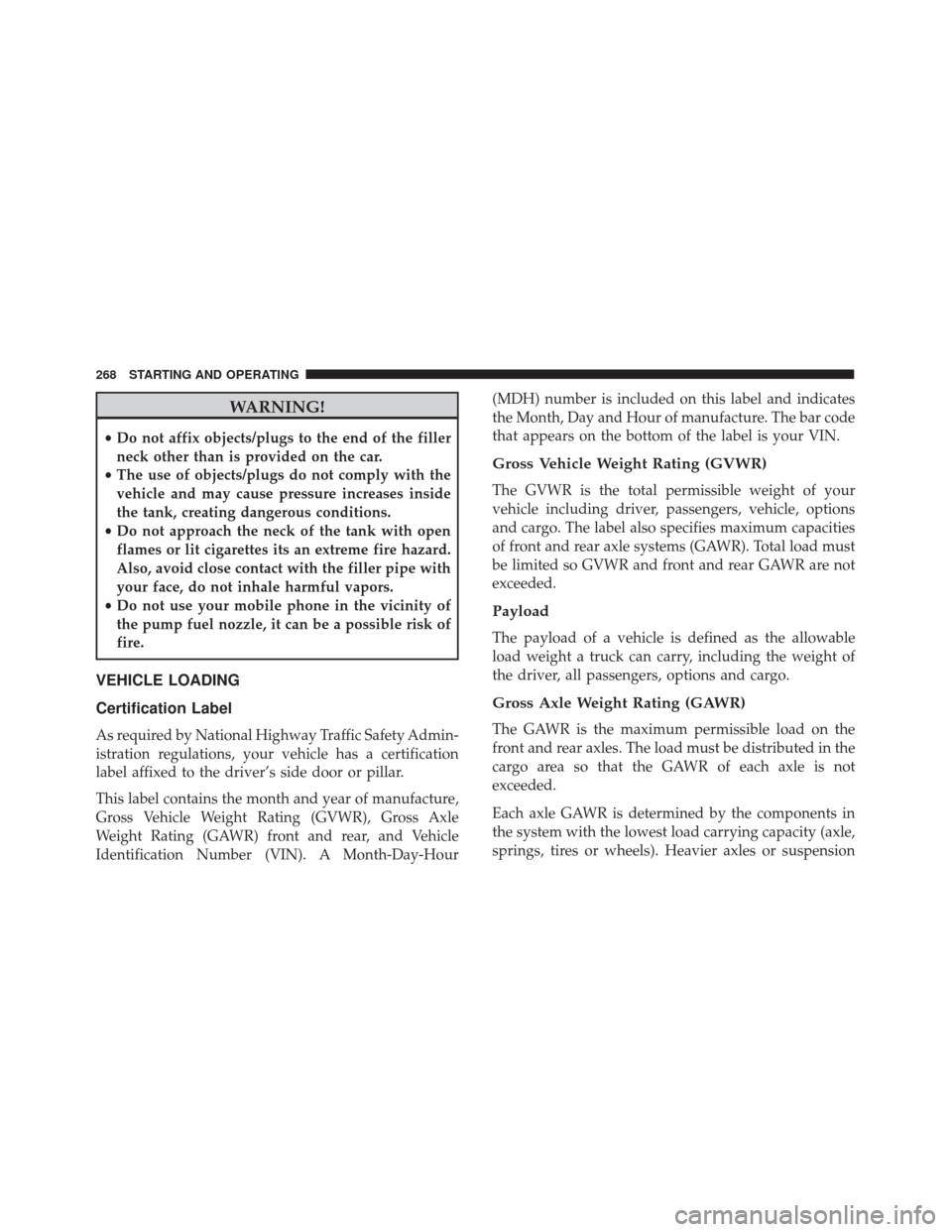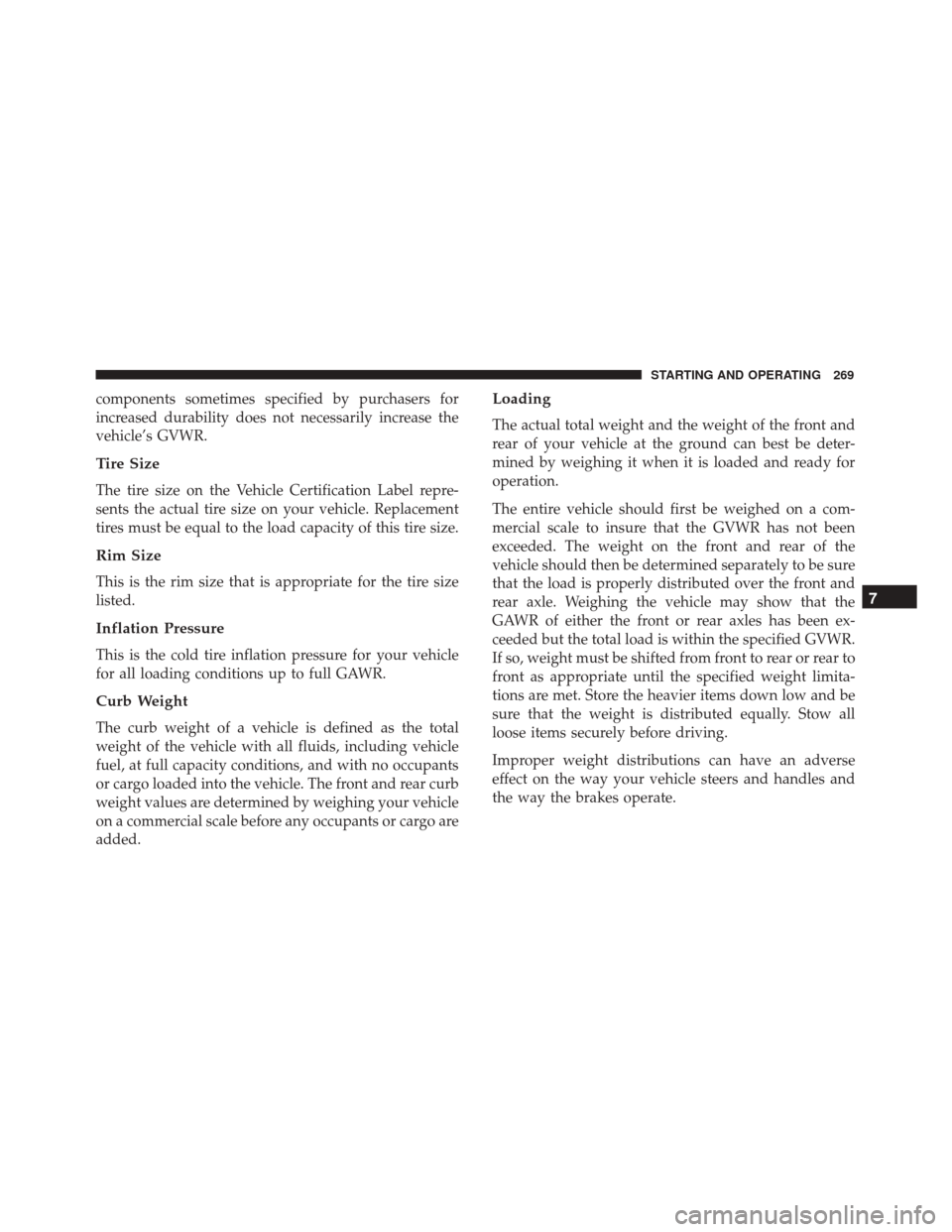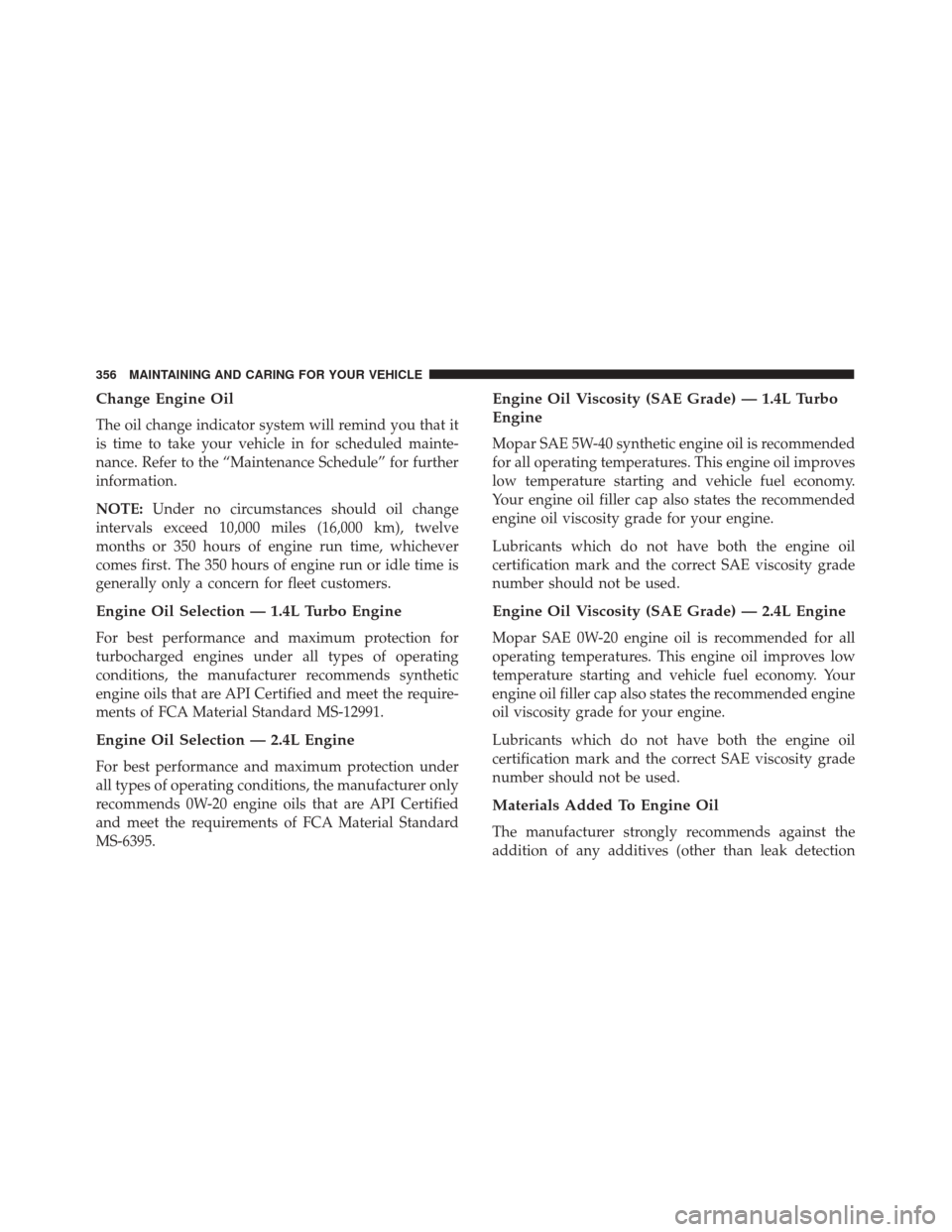2014 FIAT 500X fuel cap
[x] Cancel search: fuel capPage 142 of 476

Yellow Telltale Indicator Lights
Low Fuel Indicator Light
Yellow TelltaleLight What It Means
Low Fuel Indicator Light
When the fuel level reaches approximately 1.3–1.8 gal (5–7 L) this light will turn on, and
remain on until fuel is added.
Engine Check/Malfunction Indicator Light (MIL)
Yellow Telltale
Light What It Means
Engine Check/Malfunction Indicator Light (MIL)
The Engine Check/Malfunction Indicator Light (MIL) is a part of an Onboard Diagnostic
System called OBD II that monitors engine and automatic transmission control systems. The
light will illuminate when the ignition is in the MAR (ACC/ON/RUN) position before en-
gine start. If the bulb does not come on when turning the key from STOP (OFF/LOCK) to
MAR (ACC/ON/RUN), have the condition checked promptly.
Certain conditions, such as a loose or missing gas cap, poor quality fuel, etc., may illuminate
the light after engine start. The vehicle should be serviced if the light stays on through sev-
eral typical driving styles. In most situations, the vehicle will drive normally and will not
require towing.
140 GETTING TO KNOW YOUR INSTRUMENT PANEL
Page 240 of 476

ALL WHEEL DRIVE (AWD) — IF EQUIPPED
This feature provides on-demand All-Wheel Drive
(AWD). The system is automatic with no driver inputs
or additional driving skills required. Under normal
driving conditions, the front wheels provide most of the
traction. If the front wheels begin to lose traction, power
is shifted automatically to the rear wheels. The greater
the front wheel traction loss, the greater the power
transfer to the rear wheels.
Additionally, on dry pavement under heavy throttle
input (where one may have no wheel spin), torque will
be sent to the rear in a pre-emptive effort to improve
vehicle launch and performance characteristics.
CAUTION!
All wheels must have the same size and type tires.
Unequal tire sizes must not be used. Unequal tire
size may cause failure of the power transfer unit.
DYNAMIC SELECTOR — IF EQUIPPED
The Dynamic Selector combines the capabilities of the
vehicle control systems, along with driver input, to
provide the best performance in all driving conditions.The Dynamic Selector consists of the following posi-
tions:
Auto Mode –
This mode is designed for comfort and
safety in normal driving conditions. In versions
equipped with all-wheel drive, this mode also reduces
fuel consumption by automatically altering the distri-
bution of torque between the front and rear axle.
All Weather Mode – This mode offers increased trac-
tion control and stability control for low traction condi-
tions such as driving on a dirt road or off road as well
as wet and slippery roads.
Dynamic Selector Switch
238 STARTING AND OPERATING
Page 267 of 476

NOTE:Intentional tampering with the emissions con-
trol system can result in civil penalties being assessed
against you.
Carbon Monoxide Warnings
WARNING!
Carbon monoxide (CO) in exhaust gases is deadly.
Follow the precautions below to prevent carbon
monoxide poisoning:
• Do not inhale exhaust gases. They contain carbon
monoxide, a colorless and odorless gas, which can
kill. Never run the engine in a closed area, such as
a garage, and never sit in a parked vehicle with
the engine running for an extended period. If the
vehicle is stopped in an open area with the engine
running for more than a short period, adjust the
ventilation system to force fresh, outside air into
the vehicle.
• Guard against carbon monoxide with proper
maintenance. Have the exhaust system inspected
every time the vehicle is raised. Have any abnor-
mal conditions repaired promptly. Until repaired,
drive with all side windows fully open.
ADDING FUEL
The Capless Fuel System uses a flapper placed at the
filler pipe of the fuel tank; it opens and closes automati-
cally upon insertion/extraction of the fuel nozzle.
The Capless Fuel System is designed so that it prevents
the filling of an incorrect type of fuel.
Opening The Door
For filling, proceed as follows:
1. Open the door, by pushing and releasing on the indentation point indicated by the arrow.
Fuel Filler Door
7
STARTING AND OPERATING 265
Page 270 of 476

WARNING!
•Do not affix objects/plugs to the end of the filler
neck other than is provided on the car.
• The use of objects/plugs do not comply with the
vehicle and may cause pressure increases inside
the tank, creating dangerous conditions.
• Do not approach the neck of the tank with open
flames or lit cigarettes its an extreme fire hazard.
Also, avoid close contact with the filler pipe with
your face, do not inhale harmful vapors.
• Do not use your mobile phone in the vicinity of
the pump fuel nozzle, it can be a possible risk of
fire.
VEHICLE LOADING
Certification Label
As required by National Highway Traffic Safety Admin-
istration regulations, your vehicle has a certification
label affixed to the driver’s side door or pillar.
This label contains the month and year of manufacture,
Gross Vehicle Weight Rating (GVWR), Gross Axle
Weight Rating (GAWR) front and rear, and Vehicle
Identification Number (VIN). A Month-Day-Hour (MDH) number is included on this label and indicates
the Month, Day and Hour of manufacture. The bar code
that appears on the bottom of the label is your VIN.
Gross Vehicle Weight Rating (GVWR)
The GVWR is the total permissible weight of your
vehicle including driver, passengers, vehicle, options
and cargo. The label also specifies maximum capacities
of front and rear axle systems (GAWR). Total load must
be limited so GVWR and front and rear GAWR are not
exceeded.
Payload
The payload of a vehicle is defined as the allowable
load weight a truck can carry, including the weight of
the driver, all passengers, options and cargo.
Gross Axle Weight Rating (GAWR)
The GAWR is the maximum permissible load on the
front and rear axles. The load must be distributed in the
cargo area so that the GAWR of each axle is not
exceeded.
Each axle GAWR is determined by the components in
the system with the lowest load carrying capacity (axle,
springs, tires or wheels). Heavier axles or suspension
268 STARTING AND OPERATING
Page 271 of 476

components sometimes specified by purchasers for
increased durability does not necessarily increase the
vehicle’s GVWR.
Tire Size
The tire size on the Vehicle Certification Label repre-
sents the actual tire size on your vehicle. Replacement
tires must be equal to the load capacity of this tire size.
Rim Size
This is the rim size that is appropriate for the tire size
listed.
Inflation Pressure
This is the cold tire inflation pressure for your vehicle
for all loading conditions up to full GAWR.
Curb Weight
The curb weight of a vehicle is defined as the total
weight of the vehicle with all fluids, including vehicle
fuel, at full capacity conditions, and with no occupants
or cargo loaded into the vehicle. The front and rear curb
weight values are determined by weighing your vehicle
on a commercial scale before any occupants or cargo are
added.
Loading
The actual total weight and the weight of the front and
rear of your vehicle at the ground can best be deter-
mined by weighing it when it is loaded and ready for
operation.
The entire vehicle should first be weighed on a com-
mercial scale to insure that the GVWR has not been
exceeded. The weight on the front and rear of the
vehicle should then be determined separately to be sure
that the load is properly distributed over the front and
rear axle. Weighing the vehicle may show that the
GAWR of either the front or rear axles has been ex-
ceeded but the total load is within the specified GVWR.
If so, weight must be shifted from front to rear or rear to
front as appropriate until the specified weight limita-
tions are met. Store the heavier items down low and be
sure that the weight is distributed equally. Stow all
loose items securely before driving.
Improper weight distributions can have an adverse
effect on the way your vehicle steers and handles and
the way the brakes operate.
7
STARTING AND OPERATING 269
Page 358 of 476

Change Engine Oil
The oil change indicator system will remind you that it
is time to take your vehicle in for scheduled mainte-
nance. Refer to the “Maintenance Schedule” for further
information.
NOTE:Under no circumstances should oil change
intervals exceed 10,000 miles (16,000 km), twelve
months or 350 hours of engine run time, whichever
comes first. The 350 hours of engine run or idle time is
generally only a concern for fleet customers.
Engine Oil Selection — 1.4L Turbo Engine
For best performance and maximum protection for
turbocharged engines under all types of operating
conditions, the manufacturer recommends synthetic
engine oils that are API Certified and meet the require-
ments of FCA Material Standard MS-12991.
Engine Oil Selection — 2.4L Engine
For best performance and maximum protection under
all types of operating conditions, the manufacturer only
recommends 0W-20 engine oils that are API Certified
and meet the requirements of FCA Material Standard
MS-6395.
Engine Oil Viscosity (SAE Grade) — 1.4L Turbo
Engine
Mopar SAE 5W-40 synthetic engine oil is recommended
for all operating temperatures. This engine oil improves
low temperature starting and vehicle fuel economy.
Your engine oil filler cap also states the recommended
engine oil viscosity grade for your engine.
Lubricants which do not have both the engine oil
certification mark and the correct SAE viscosity grade
number should not be used.
Engine Oil Viscosity (SAE Grade) — 2.4L Engine
Mopar SAE 0W-20 engine oil is recommended for all
operating temperatures. This engine oil improves low
temperature starting and vehicle fuel economy. Your
engine oil filler cap also states the recommended engine
oil viscosity grade for your engine.
Lubricants which do not have both the engine oil
certification mark and the correct SAE viscosity grade
number should not be used.
Materials Added To Engine Oil
The manufacturer strongly recommends against the
addition of any additives (other than leak detection
356 MAINTAINING AND CARING FOR YOUR VEHICLE
Page 392 of 476

Fuel Economy
Underinflated tires will increase tire rolling resistance
resulting in higher fuel consumption.
Tread Wear
Improper cold tire inflation pressures can cause abnor-
mal wear patterns and reduced tread life, resulting in
the need for earlier tire replacement.
Ride Comfort And Vehicle Stability
Proper tire inflation contributes to a comfortable ride.
Over-inflation produces a jarring and uncomfortable
ride.
Tire Inflation Pressures
The proper cold tire inflation pressure is listed on the
driver’s side B-Pillar or rear edge of the driver’s side
door.
At least once a month:
•Check and adjust tire pressure with a good quality
pocket-type pressure gauge. Do not make a visual
judgement when determining proper inflation. Tires
may look properly inflated even when they are
under-inflated. •
Inspect tires for signs of tire wear or visible damage.
CAUTION!
After inspecting or adjusting the tire pressure,
always reinstall the valve stem cap. This will pre-
vent moisture and dirt from entering the valve stem,
which could damage the valve stem.
Inflation pressures specified on the placard are always
“cold tire inflation pressure”. Cold tire inflation pres-
sure is defined as the tire pressure after the vehicle has
not been driven for at least three hours, or driven less
than 1 mile (1.6 km) after sitting for a minimum of three
hours. The cold tire inflation pressure must not exceed
the maximum inflation pressure molded into the tire
sidewall.
Check tire pressures more often if subject to a wide
range of outdoor temperatures, as tire pressures vary
with temperature changes.
Tire pressures change by approximately 1 psi (7 kPa)
per 12°F (7°C) of air temperature change. Keep this in
mind when checking tire pressure inside a garage,
especially in the Winter.
390 MAINTAINING AND CARING FOR YOUR VEHICLE
Page 409 of 476

FLUID CAPACITIES
U.SMetric
Fuel (Approximate)
1.4L Turbo/2.4L Engine 12.7 Gallons48 Liters
Engine Oil With Filter
1.4L Turbo Engine (SAE 5W-40 Synthetic, API Certified) 4.0 Quarts 3.8 Liters
2.4L Engine (SAE 0W-20, API Certified) 5.5 Quarts5.2 Liters
Cooling System *
1.4L Turbo Engine (Mopar Antifreeze/Engine Coolant 10
Year/150,000 Mile Formula) 5.5 Quarts
5.2 Liters
2.4L Engine (Mopar Antifreeze/Engine Coolant 10 Year/
150,000 Mile Formula) 6.8 Quarts
6.5 Liters
* Includes heater and coolant recovery bottle filled to MAX level.
10
TECHNICAL DATA 407